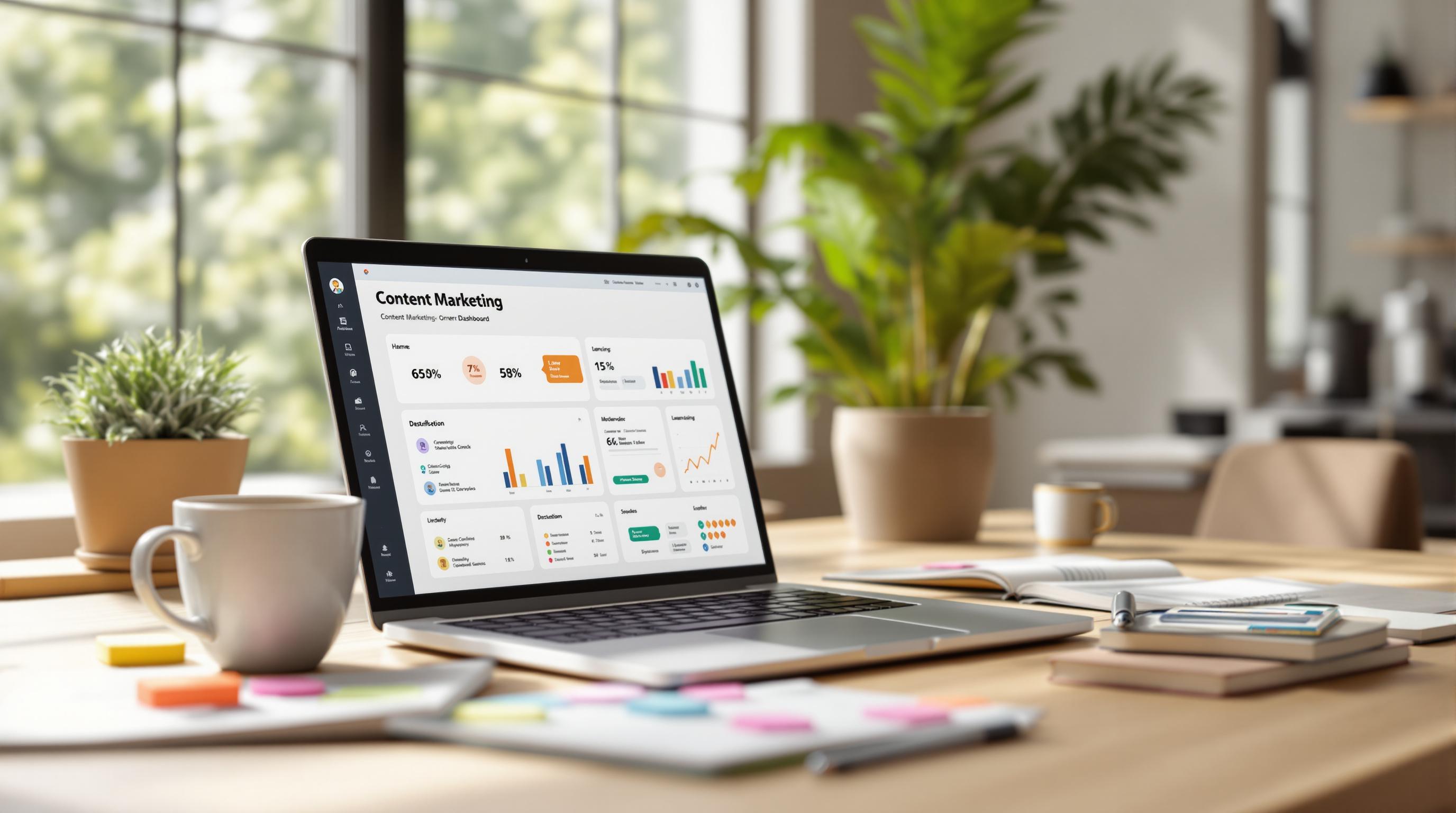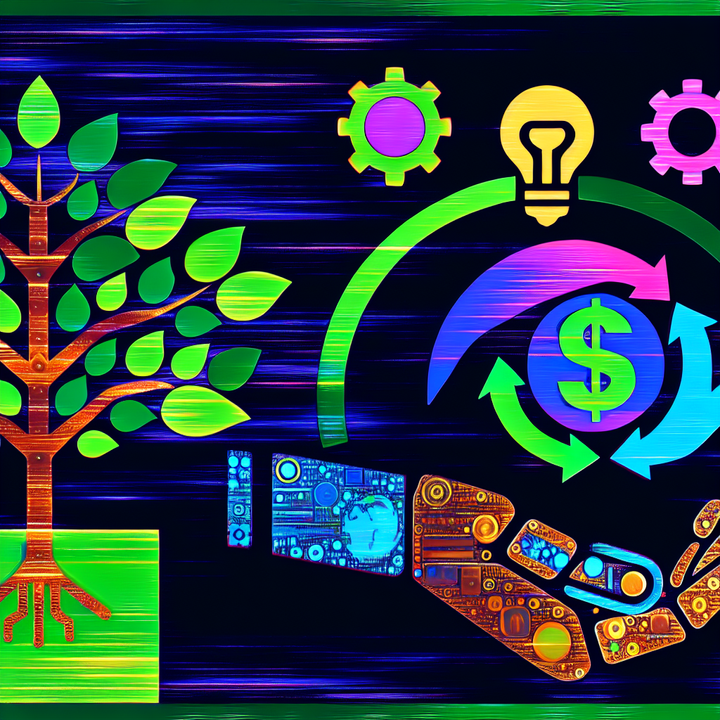Effective Content Distribution Channels for Lead Generation

Welcome to the world of content distribution and lead generation, where the magic happens through strategic planning and intelligent use of available channels. The key to ramping up your marketing efforts lies in understanding and leveraging these channels effectively. Let's dive in.
Understanding Content Distribution Channels
Content distribution channels are the mediums through which your content reaches your audience. These include social media platforms, email newsletters, content syndication networks, guest blogs, organic search, and paid advertising. Each channel serves a specific purpose and targets different audience segments, making a multi-channel approach vital for holistic marketing strategy.
Here’s why these channels are crucial:
- They amplify your content's reach.
- They cater to diverse audience preferences.
- They support different formats like text, video, and images.
- They can be leveraged for both organic and paid distribution.
By utilizing a combination of these channels, you can ensure that your content reaches the right people at the right time, ultimately driving more traffic and generating leads.
Why Effective Content Distribution is Crucial for Lead Generation
The goal of content marketing goes beyond mere creation; it’s about reaching your target audience and converting them into leads. Effective content distribution plays a pivotal role in this process. Unlike content creation, which focuses solely on producing valuable information, distribution ensures that this information gets in front of prospective leads.
"You can create the best content in the world, but if it's not distributed properly, it's like winking in the dark."
Effective content distribution helps:
- Boost website traffic.
- Improve search engine rankings through backlinks.
- Increase brand visibility and authority.
- Drive conversions and lead generation.
Therefore, businesses must focus not just on creating high-quality content but also on distributing it effectively to maximize their lead generation efforts.
Identifying Your Target Audience
Understanding your target audience is fundamental before choosing your distribution channels. Knowing where your audience spends their time online and what content they engage with is crucial for effective content marketing.
Here are some tips to identify your target audience:
- Conduct market research to understand demographic information.
- Use social listening tools to gauge audience interests and behaviors.
- Analyze website and social media analytics to identify engagement patterns.
- Create audience personas to tailor your content and distribution strategy.
Once you have a clear understanding of your audience, you can choose the most effective distribution channels to reach them.
Email Marketing Channels
Email marketing remains one of the most powerful tools for content distribution and lead generation. It allows you to directly reach your audience's inbox, presenting content tailored to their preferences and behaviors.
Types of email campaigns you can use:
| Type | Purpose |
|---|---|
| Newsletters | Keep subscribers informed about new content, updates, and industry news. |
| Promotional Emails | Highlight special offers, events, or new products. |
| Automated Sequences | Nurture leads with a series of targeted emails based on their actions. |
Best practices for effective email marketing include:
- Segmenting your email list for targeted communication.
- Personalizing email content for higher engagement.
- Using compelling subject lines to improve open rates.
- Including clear calls-to-action to guide recipients.
Social Media Platforms
Social media platforms like Facebook, LinkedIn, Twitter, and Instagram offer diverse opportunities for content distribution. Each platform caters to different audiences and types of content, making it vital to choose the right one based on your business and target market.
Here's a quick breakdown of major social media platforms:
| Platform | Best For |
|---|---|
| B2C businesses, community building, and shareable content. | |
| B2B businesses, professional networking, and industry expertise. | |
| Real-time updates, news, and quick interactions. | |
| Visual storytelling and lifestyle brands. |
Choosing the right platform involves understanding where your audience is most active and how they prefer to consume content. Tailoring your distribution strategy accordingly can significantly boost engagement and lead generation.
Content Syndication Networks
Content syndication is the process of publishing your content on third-party websites to reach a broader audience. This strategy extends the lifecycle of your content and drives referral traffic back to your site, aiding in lead generation.
Popular syndication networks include:
- Outbrain
- Taboola
- Medium
- LinkedIn Pulse
To effectively use content syndication:
- Choose reputable syndication networks aligned with your industry.
- Ensure your original content links back to your website.
- Track performance metrics like traffic and backlinks generated.
By spreading your content across multiple platforms, you can enhance its visibility and attract more leads.
Guest Blogging and Partnerships
Guest blogging and forming partnerships with influencers or industry experts are excellent ways to distribute your content. By contributing valuable insights to established platforms, you can tap into new audiences and bolster your authority.
Advantages of guest blogging and partnerships:
- Access to a broader, established audience.
- Enhanced credibility and brand authority.
- Improved SEO through quality backlinks.
- Potential for collaborative content creation and mutual promotion.
To get started:
- Identify influential blogs and experts in your industry.
- Craft compelling pitches tailored to their audience.
- Offer unique, valuable content that aligns with their platform's tone and style.
SEO and Organic Search
Search Engine Optimization (SEO) is the backbone of organic content distribution. By optimizing your content for search engines, you can attract organic traffic and generate leads without constantly relying on paid promotions.
SEO best practices include:
- Using relevant keywords naturally within your content.
- Creating high-quality, informative content that answers user queries.
- Leveraging on-page SEO elements like meta tags, headers, and alt text.
- Building a robust backlink profile from authoritative sites.
Incorporating SEO into your content strategy ensures that your content remains discoverable and continuously attracts traffic and leads over time.
Paid Advertising and PPC Campaigns
Paid advertising and PPC (Pay-Per-Click) campaigns are valuable tools for boosting content visibility and generating leads swiftly. Unlike organic methods, paid ads provide instant exposure and can be highly targeted.
Benefits of paid advertising:
- Immediate visibility boost.
- Targeted reach based on demographics, interests, and behaviors.
- Measurable ROI through analytics and tracking.
- Flexibility to adjust and optimize campaigns in real-time.
To run effective PPC campaigns:
- Select the right platform (Google Ads, Facebook Ads, LinkedIn Ads, etc.) based on your audience.
- Define clear campaign goals and KPIs.
- Craft compelling ad copy and visuals.
- Continuously monitor and optimize campaigns for better performance.
Combining paid advertising with your organic efforts creates a balanced and effective content distribution strategy.
Webinars and Live Streaming
Webinars and live streaming offer interactive content distribution channels that foster real-time engagement and lead generation. These formats allow you to deliver massive value, answer questions live, and build stronger connections with your audience.
Benefits of webinars and live streaming:
- Direct interaction with your audience.
- Opportunities to showcase expertise and address pain points.
- High engagement levels through Q&A sessions and interactive polls.
- Potential to repurpose content for future use (recordings, highlights, etc.).
To leverage these channels:
- Choose topics that resonate with your audience's needs and interests.
- Promote your events through social media, email, and partner channels.
- Engage participants during the event with interactive elements.
- Follow up with attendees post-event to nurture leads.
Measuring the Success of Your Content Distribution
Evaluating the effectiveness of your content distribution strategy is critical to its continued success. Key metrics and tools can help you understand what's working and where adjustments are needed.
Important metrics to track include:
| Metric | Description |
|---|---|
| Website Traffic | The number of visitors to your site. |
| Engagement Rate | How actively users interact with your content. |
| Conversion Rate | The percentage of visitors who take the desired action. |
| Backlinks | The number and quality of links from other sites to yours. |
| Email Open and Click Rates | The effectiveness of your email campaigns. |
Tools like Google Analytics, social media insights, and email marketing platforms provide valuable data to track these metrics. Regularly reviewing performance data helps you refine your strategy and optimize content distribution for better results.
Case Studies: Success Stories in Content Distribution
Let’s look at real-life examples of businesses that have successfully implemented robust content distribution strategies for lead generation.
Company A: E-commerce Strategy: Leveraged email marketing and social media. Results: 50% increase in traffic, 30% surge in conversion rates.
Company B: B2B Tech Strategy: Focused on SEO and guest blogging. Results: Ranked 1st on Google for critical keywords, generating high-quality leads.
These case studies highlight the importance of a tailored approach that considers the unique needs of each business.
Choosing the Right Channels for Your Business
Selecting the most effective content distribution channels depends on several factors, including your business goals, audience, budget, and industry. Here’s a guide to making informed decisions:
- Analyze your target audience's preferences and online behavior.
- Consider your budget and the cost-effectiveness of each channel.
- Assess the resources available for content creation and distribution.
- Look at competitors' strategies and the channels they’re using successfully.
A combination of various channels, tailored to your specific requirements, ensures that your content remains visible and engaging.
Leveraging Automation for Efficient Content Distribution
Automation in content distribution is a game-changer. Taleflow’s automated solutions streamline the process, ensuring consistent and SEO-optimized content delivery across multiple channels without the manual effort.
Benefits of using Taleflow:
- Automated blog service that creates and publishes high-quality content.
- Newsletter automation to keep your audience engaged.
- Effortless content marketing automation, saving time and resources.
- SEO-optimized content to improve search rankings and generate leads.
By leveraging automation, you can focus on strategic initiatives while ensuring a steady flow of high-quality content that increases website traffic and generates leads effortlessly.
In conclusion, effective content distribution is a multi-faceted process that involves understanding your audience, choosing the right channels, leveraging automation, and continuously measuring and optimizing your efforts. By integrating these strategies, you set the stage for robust lead generation and long-term success.



